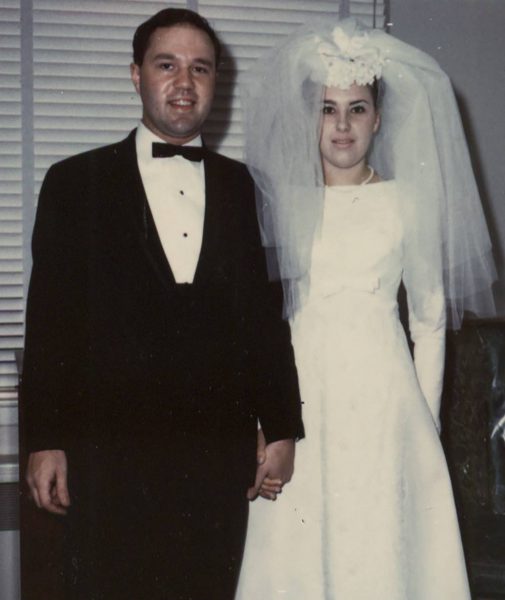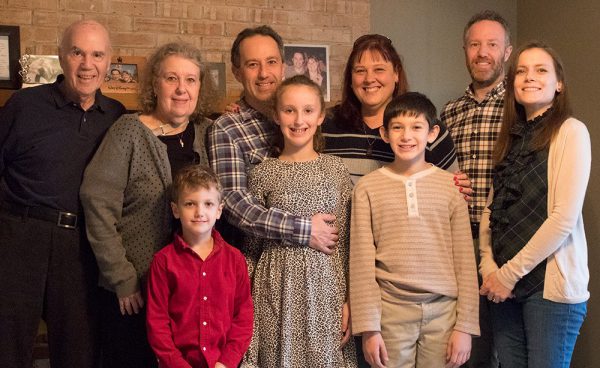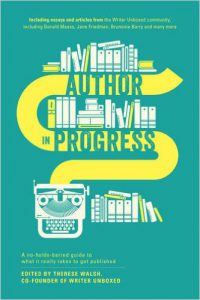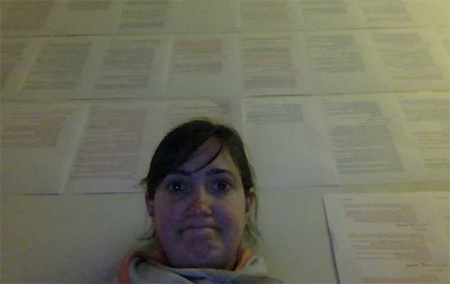Most of the people I work with — writers and other creative professionals — work from home. They develop their craft amidst other responsibilities, and the worries that come with them: family, finance, health, home, relationships, and so much else.
Very often, I talk about creative habits that help you produce great work, and to connect it with people in a meaningful way. Today I want to talk about the other habits that surround and encourage creative work. Habits of physical health, mental health, family health, financial health, and productivity. The habits that create a support system which protects and encourages your ability to pursue your vision.
Are these “rules”? Nope. Do them or don’t. Tweak them your own way. Add your own. But I would encourage you to consider developing some weekly, monthly, quarterly, and yearly habits that touch upon some of the themes below.
Why? Because if you are following your creative vision to create meaningful work; if you are fitting this work into the cracks of an otherwise busy life; it is too easy to burn out. To neglect important aspects of daily living. To ignore important relationships.
This is all stuff I do, it’s not just a pie in the sky list. I’ve run my own company for more than six years now, working from home, while raising a family with my wife. Am I missing a lot of items here? Probably. But I find that developing these habits not only help me work better, but also feel more fulfilled.
Let’s dig in…
Back Up Everything. Twice.
What if I told you that tomorrow, your home would burn down. No one would be injured, but all of your stuff would be gone. What would you regret not saving?
Back it up.
Back up everything you care about, including:
- Your writing or other creative work. This can be as simple as a Dropbox backup. If you write longhand, take photos of the pages.
- Your online creative work. If you have a blog, download a plug-in to automatically email you backups once per week.
- Your photos. I could write an entire post just about this. Download the photos from your phone, and back them up. Seriously. Because one day you will lose your phone, and with it, an entire year or two worth of family photos.
- For physical objects in your life that you love, but can’t back up like you can a digital file, take a photo of it. Photos are free. Walk around your house, and take hundreds of photos of things you care about and want to have a record of. If they are important documents, take photos of those too.
- Consider taking photos of your home and property to record the time and place, even if just for insurance reasons. Even the outside of your home, the trees, the property. I have found that it is a nice record of how things were.
Create redundant backups, meaning that if one backup fails, you have another. You can use external hard drives for this, and software like Backblaze or Carbon Copy Cloner.
Keep backups in multiple locations. This can be an online backup or an offsite backup, such as keeping a backup external hard drive at your office.
Have backups for essential equipment, the tools you use. Since I work from home, I have a generator. If the power goes out, my business doesn’t go down.
I work from two computers that are 100% mine, not shared with my wife. One is a laptop, one a desktop. If one is out of commission, the other is fully synced. I replace each of them every 3 years or so.
For you, this could mean having two phones, one for work, and one personal. Or it could mean you pay for a mobile hotspot as a backup internet access.
When you hire a photographer for a wedding, you will notice they come with at least two cameras, if not more. You may not even see the backup gear they have in their bags. They often have an assistant or two. Why? Because when they have one chance to get it right, the cost of justifying a second or third camera is negligible to their business.
If you take your creative work seriously, do the same thing.
This can even extend to communication channels. In the earlier days of YouTube, many super popular YouTubers had a single channel. What I noticed over time is that somethings their channels would be down for some reason, and they lost their entire way to connect with their audience. Now many YouTubers either have a “B” channel where they can share updates, or they strongly encourage their subscribers to also follow them on other channels: Twitter, Instagram, Snapchat, Facebook, newsletter, etc. It is a communication backup plan, and one that is critical to their creative career.
If you have an email list with 1,000 names on it in Mailchimp that you consider the lifeblood of your business, BACK THAT LIST UP! Plan for Mailchimp to be hacked and lose all of your data.
Don’t Ignore Physical Health
I’ll start simply here: clean your keyboard. It’s disgusting. Just consider all of the things we touch throughout our days, and how it all ends up in the little cracks of our keyboards. Go clean it. Every couple years, replace it.
While your at it, assess the entire area around where you work. Clean your chair and the area beneath it, your mouse, your monitor, your desk.
Do you work in a small space? Check for air circulation. Are your heating vents and AC vents clean? Or are you breathing in 20 year old dust all day?
Do you use a window AC unit? Look in the vents. If you see little black dots everywhere, throw it out. Seriously. It’s mold, and it is bad for you. It’s the kind of thing that creates problems for you 20 years down the road. Trust me, “old you” doesn’t want that problem.
Consider if you need more lighting in your work space. Your eyes will thank you for it.
Consider if your chair is creating horrible habits for your back or wrist. If so, buy a new chair. Or consider getting a standing desk. I recently just added a standing desk to my office (keeping my regular sitting desk too.) I built it from IKEA for less than $20. It have found that it is nice to be able to move around while I work, having some work sessions while I sit at my desktop computer, and some while I stand at my laptop.
I won’t go too much further into physical health because it is such a big topic, but I’ll encourage this:
- If you work at a desk all day, take your lunch break seriously. Get out of the office or work area. I won’t lie: if you work in an office environment, that may create tension with your coworkers or boss. You may get questions like, “Where did you disappear to?” Regardless: take a lunch break. Every day. That’s your time.
- Have some kind of workout routine. ANY KIND. At least once per week. Beyond that, find what works for you. Personally, I have found that having a personal trainer three days per week radically reshaped my health. Do what feels right to you.
Create More White Space
This is about attending to mental health. Which is JUST AS IMPORTANT — IF NOT MORE — than physical health. Are you ignoring mental health in some ploy to “suck it up” and be “strong”. Stop. The world wants you to be fulfilled, not wavering on the edge of sanity because you are so overwhelmed.
I call this creating more “white space” — unstructured time that allows you to feel space between things in the world. Instead of what most of us feel constantly: total overwhelm of dealing with work, family, health, relationships, home, money, and so much else.
This too is a topic I will only touch upon here, but here are some practical actions you can take to create more white space in your life:
Unsubscribe from email lists you no longer care about.
Declutter your office. For all of those piles of stuff that you consider to be critical, throw them in boxes and shove it into the attic. Put a “throw out by X date” on it. When that date arrives, and you still haven’t needed that “critical” stuff, put it in the trash.
Clear out your email inbox. If you have 1,000 unread items, put them into a new folder marked “OLD.” Enjoy that single moment of feeling like you are starting fresh.
Clear off your desk.
Clear your web browser cookies.
Earlier this year, I wrote about the power of saying “no” concluding:
Distraction takes us away from devoting our focus to the things that matter most. The problem is not just that we say yes to too many things, but we don’t identify the few key things that matter most, and commit fully.
In other words: we don’t say YES to what we want with emphasis. We say “yes” meekly. This is a huge problem.
Attend to Relationships
If you are lucky enough to have your mom and dad still with us, call them. Go ahead. If any of your grandparents are still with us, call them too. Tell them you love them.
Just touch base with old friends. A simple update. A simple note that says “I was thinking of you, I hope all is well.”
If you have a significant other, plan a date night.
Take photos of your family. All of you in the shot, use the timer on your camera that you never quite figured out.
I know, you don’t have time for any of this. But 20 years from now, you will be thankful you took each of these actions.
Take Security Seriously
Manage your passwords. Change them with some frequency. Don’t use the same password for everything. Don’t use obvious passwords.
Update your software. If you are clinging to some super old version of your browser, your operating system, or your word processor because it is “familiar,” you are asking for trouble down the road when one program stops playing nice with another. Go through your phone once a month and ensure all of the apps are up to date. With your computer, once a quarter, or once a year.
This applies to things like online software as well. If you use WordPress, go ahead and ensure it is up to date, including all of your plug-ins.
Old software is full of security vulnerabilities. Plug them up now.
I would say that money and finance fits into “security” as well. Huge topic, that I will (again) just briefly touch upon:
- Have an emergency fund.
- Set aside some amount of money each month to it. Even if it is only $10 or $20 per month. Make it a habit. Just like health, even establishing the tiniest habit around finance can lead you to adding other habits.
To me, each of these things helps create a support system around your creative work.
What did I miss? What other stuff could we better manage that encourages us to feel less overwhelmed so that our creative work seems possible?
Thanks.
-Dan




